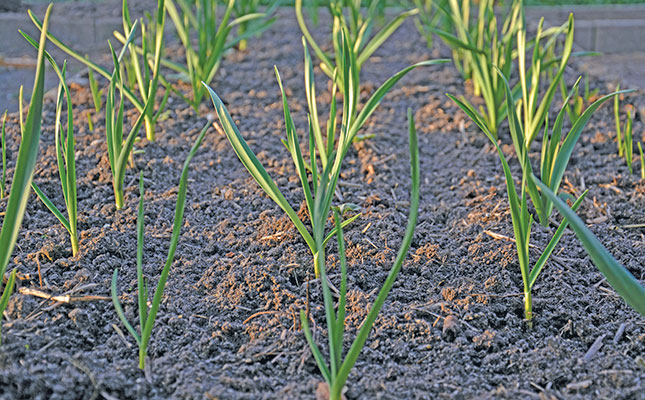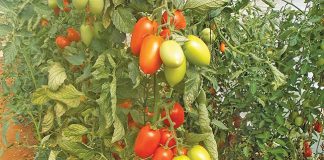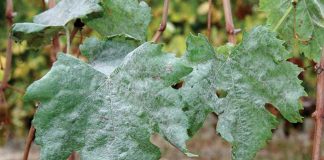
Photo: FW Archive
It is therefore important to carry out a soil analysis and develop a fertiliser programme accordingly.
Garlic responds well to organic matter, so manure or compost should be used where possible. Apart from providing nutrients, they make for a healthier crop.
Take care when sourcing plant material; disease can easily be introduced in this way.
Because cloves are the initial source of nutrients for the crop, use only large cloves.
Smaller inner cloves will produce smaller bulbs.
It is strongly advisable to grade the cloves according to size. This will ensure that the bulbs are uniform and mature at the same time, making harvesting easier.
Plant the cloves about 8cm apart in the row, with an intra-row spacing of about 20cm. The precise row spacing is usually dependent on the mechanical equipment used for the crop.
The planting depth should be between 3cm and 5cm. It is best to plant with the growing tip facing upwards, but this is not essential.
Aim for a plant density of about 50 plants per square metre.
Get the plants off to a quick start in order to ensure as much growth as possible before winter. I prefer to plant in February for this reason.
Usually, the leaves will protrude from the soil between 10 days and three weeks after planting. Apply herbicide before this happens. Any product that is used for onions is suitable for garlic.
Beware of cutworm. Adding a pyrethroid to the pre-emergence herbicide is the most expedient way of dealing with this threat.
Growth will be slow in winter, particularly in cold areas. For this reason, as soon as the weather warms up in spring, stimulate the plants as much as possible by ensuring that enough nitrogen is available.
Energy factory
The size of the plants will determine the size of the bulbs formed. The leaf area is the plant’s ‘energy factory’ and should be kept healthy.
Watch out for thrips. These minute insects cause small, light blotches on the leaves by scraping the epidermis and drinking the sap. They tend to be a greater problem under hot, dry conditions.
If you part the leaves at the growth point, you will find the yellow juveniles lurking here (the adults are dark).
If their population is low, thrips need not be a concern; their natural enemies should be able to deal with them. If the population increases, apply a suitable insecticide. Ensure that you use a good wetting agent with it, as the leaves are waxy and shed water.
At maturity
At maturity, the plants start to die back and the cloves fill rapidly. They should be mature and filled out at lifting. Avoid harvesting them before this.
Lift the bulbs when about 50% of the plant has died back. As this stage tends to coincide with the rainy season in most areas, make sure you harvest the bulbs before they develop fungus on the outer skin.
Bill Kerr is a vegetable specialist and a breeder of a range of vegetables.










